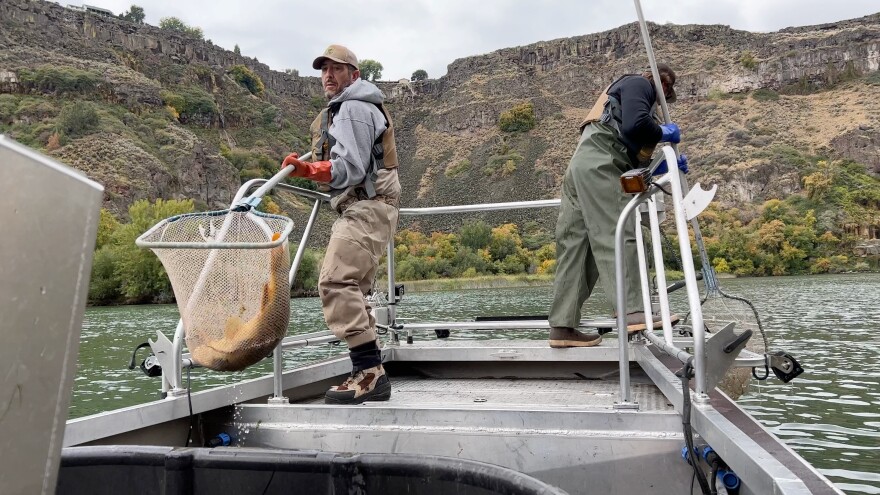The Idaho State Department of Agriculture started treatment Tuesday on a 3.5-mile section of the Snake River still affected by the invasive quagga mussels.
The ISDA first detected the species in 2023. Two rounds of the treatment in the last two years cleared about half of the waterways, but recent samples showed quagga were still present between Shoshone and Twin Falls.
ISDA Deputy Director Lloyd Knight said for this next phase, the crew will be using a custom-made machine with a long tube to spray a chelated copper product, Natrix, in the harder-to-reach areas of the river.
“It's not really a straight bathtub,” he said. “There's a lot of nooks and crannies and holes, and there's several deep holes that are anywhere from 60 to 90 feet deep within the river that we're going to concentrate treatment on this year.”
“The river flows over the top of those holes; there's very little water that exchanges below about 30ft,” he added.
Quagga mussels have to be exposed to the copper product for 200 hours, at a certain concentration, to be effective.
“Once that passes over their gills at that concentration, they will expire, they will keel over,” Knight said.
“The tricky part of this is to have that concentration and time match up so that they don't find refuge somewhere,“ he added.
In a release, the ISDA said the Idaho Department of Environmental Quality will routinely monitor the river to check the effectiveness and dissipation of the product..
“Natrix is a copper-based product that is labeled and approved by EPA for this type of aquatic applications. The product has been used in other states for mussel, fish, algae, and plant control,” the Department said. “The product dissipates downstream and is expected to be gone within three days after the final application.”
The copper is likely to kill fish and aquatic plants in the area, but mortality will decline as the product dissipates at the end of the ten-day process. Access to the Snake River from Hansen Bridge to Pillar Falls will be closed during the treatment.



